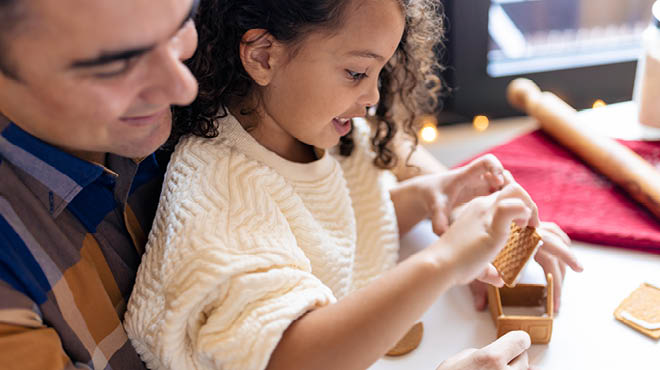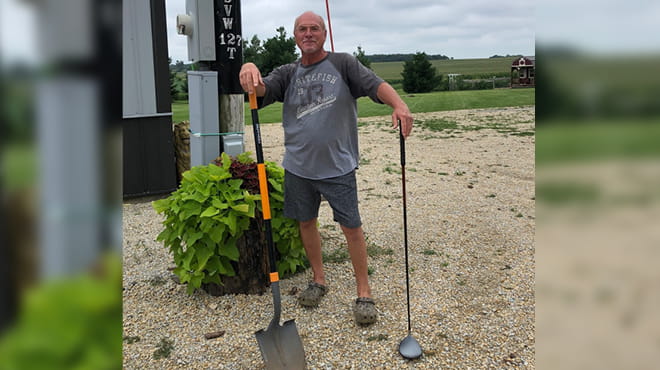Recent Posts
Need motivation to tackle your New Year's resolutions?

It's plain and simple. Motivation is essential for successful changes to your lifestyle. Challenges and changes in your life may have you questioning if you can tackle new resolutions. Don't let the busyness of your schedule stop you. You can capture motivation and make it work for you.
Start by asking yourself these questions:
How do I get motivated?
Perhaps you get motivated by singer James Brown's song "I Feel Good," or by participating in virtual workout classes and seeing how hard others work. Decide what works for you. Setting goals will make it easier to stay committed.
What is motivation made of?
It's energy that predicts the strength and persistence of behavior. Like vitamins, you must take some motivation every day. Sometimes, that means acting as if you have it when you're not feeling it. People often wait for motivation to occur before taking action, but action can create motivation.
Where does motivation come from?
Internally, motivation is your optimism and your history. There's nothing more motivating than success, so how can you plan to be successful? What is the smallest step you can confidently take? Consider small successes and build on those for larger successes.
Externally, look at how your environment is motivating. Are people around you encouraging you to be the best version of yourself? What small goals can you reach until your internal motivation kicks in? What has worked well in the past to motivate you?
What does motivation look like?
Consider your body posture. Is it a confident pose? Believe in yourself.
What does motivation sound like?
What is your internal coach's voice saying to you? Think "You can do it" and "You are awesome."
What does motivation act like?
Motivation involves activation, persistence and intensity. Activation is deciding to change. Persistence is the act of continuing to work toward change. Intensity is the concentration or vigor of pursuing change. The level of intensity will vary with each goal, as some will be easier to achieve than others.
Next, remember the acronym "FEEL GOOD" as you consider elements of motivation:
- Find the first step.
What is the first step towards building your motivation? How can you shine on the habits you already have? What does it look like to take those habits one step further? - Energize your environment.
Who in my environment is uplifting? How can I tap into that energy? How is my environment exercise inducing? Are shoes readily available wherever you are? Are exercise clothes fun and fashionable? Does your environment and social network promote healthy choices? If not, how can you lead the way? Begin with a baby step. Share your goals with family and friends for accountability. Research shows sharing your goals with a mentor can be helpful. - Enlarge your view.
What if your blood glucose level was within normal range? Or you were within 10 pounds of your ideal weight? In what ways would your life be different? Where does the journey begin? What is working well for you? How do you build on that? Ensure your goals are realistic and measurable. - Love yourself.
By taking care of your body, you are giving yourself the best gift of all. Think of one thing now that you love about yourself. Think about one thing every day. There is room for making a change and loving yourself. - Get ready.
The way to success is 90% preparation. What do you have to do to get ready to embark on this healthy journey? What do you have to get rid of? What do you have to leave behind? What can you do today to get ready? - Obtain an optimistic viewpoint.
Put on your rose-colored glasses, and plant a smile on your face. Shrink your inner critic down to microscopic size. When evaluating your efforts, think first and foremost about what went well. What did you learn? - Overcome obstacles.
Yes, there will be setbacks, off-road trails and dead ends. Your attitude must be one of optimism. What about this setback is of value to you? Maybe early on you realized something about yourself that you never knew. What is your response to obstacles? Is this where your motivation falters? What can you do to build your resiliency physically, mentally and spiritually? What can you not do to let the excuses get in the way of reaching your goals, yet still keep you and others safe? - Discover your determination.
It's never done. Once you are on the healthy journey path, you'll want to stick to the course. Yes, a few side trips and some wanderings might happen along the way, but no hijackings 50 miles off the path. When veering too far from the path, the hard part is finding your way back. That takes determination.
Get more exercise, fitness and weight loss information to help you get started.
Kayla Wojciechowski is a clinical social worker in Family Medicine in Mankato, Minnesota.





